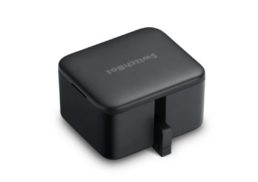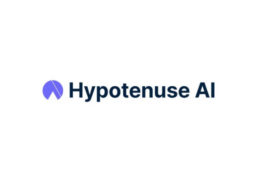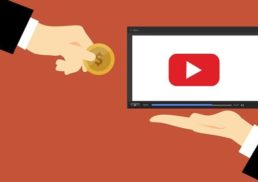Imagine having the power to access invaluable data from countless websites, transforming the way you conduct market research, monitor competitors, and gather insights through webscraping. Welcome to the world of web scraping! In this comprehensive guide, we’ll explore the ins and outs of web scraping, its applications, techniques, tools, and the legal and ethical aspects to consider. So, buckle up and get ready to unlock the true potential of web scraping!
Table of Contents
Key Takeaways
Web Scraping is an automated process of extracting data from websites, playing a key role in various industries.
It offers businesses powerful insights for market analysis and decision-making. There are challenges associated with it.
Web scraping techniques involve the use of crawlers/scrapers, software & Python libraries to enable efficient web data extraction while respecting legal & ethical considerations such as website terms and privacy regulations.
Understanding Web Scraping

Web scraping, also known as data scraping, is the automated process of extracting data from websites, playing a crucial role in various industries, including market research, lead generation, and price monitoring. Web scraping applications range from monitoring brands, providing current price comparisons, to conducting market research. The core components of web scraping are a web crawler and a web scraper, which work together to extract web data from websites.
However, there are challenges associated with web scraping. Handling dynamic websites, dealing with CAPTCHAs, and navigating legal and ethical issues are some common obstacles that web scrapers face. Despite these challenges, web scraping remains an indispensable tool for businesses seeking valuable insights and a competitive edge in the market.
The Importance of Web Scraping
Businesses rely on web scraping to collect valuable insights, make data-driven decisions, and maintain their market competitiveness. It can be employed in various contexts, such as news, journalism, reputation monitoring, SEO monitoring, competitor analysis, risk management, data-driven marketing, lead generation, real estate, academic research, and many others.
The advantages of web scraping for businesses include:
Access to structured lead lists
Efficient brand monitoring
Consistent online pricing
The ability to track industry news coverage
Summarily, web scraping provides ample data for market analysis and business intelligence, positioning it as a potent resource for industry decision-makers.
Common Web Scraping Challenges
Web scraping is not without its challenges. One of the primary difficulties encountered is handling dynamic websites, which often require rendering the entire page in a browser and executing JavaScript code to ensure accurate data capture. Additionally, dealing with CAPTCHAs is a common obstacle, as they are designed to distinguish humans from automated bots.
To overcome these challenges, web scrapers can employ various techniques, such as:
Altering their distinguishing characteristics
Manually solving CAPTCHAs
Utilizing tools like Web Unblocker or GoodByeCaptcha to bypass anti-scraping measures
Recognizing and tackling these challenges enables web scrapers to successfully mine valuable data from even the most intricate websites.
Web Scraping Techniques and Methods
Web scraping techniques and methods encompass crawlers, scrapers, and manual and automated approaches. These methods involve the use of self-developed and pre-constructed web scrapers, browser extensions, software, and Python libraries. Python is the most commonly employed language for web scraping, and selectors such as XPath, CSS selectors, and regex are applicable for web scraping.
Gaining knowledge of these techniques and methods equips web scrapers for more efficient web data extraction. Let’s delve deeper into the components of web scraping, crawlers and scrapers, and the distinction between manual and automated web scraping.
Crawlers and Scrapers
Crawlers and scrapers are the primary components of web scraping, with crawlers discovering URLs and scrapers extracting data from web pages. The crawler, akin to a horse, guides the scraper, or plow, through the digital fields by discovering URLs. On the other hand, the scraper is responsible for extracting data from web pages.
Web crawlers are artificial intelligences that traverse the internet by following links and exploring in order to index and search for content. Comprehending the roles and functions of crawlers and scrapers in web scraping allows users to optimize their data extraction process and fully exploit the potential of web scraping.
Manual vs Automated Web Scraping
Manual web scraping involves manually extracting data from websites by visiting each page, pinpointing the pertinent information, and copying it into a spreadsheet or text file. While it may be time-consuming and labor-intensive, manual web scraping offers more control and flexibility compared to automated scraping methods.
On the other hand, automated web scraping involves utilizing bots or web crawlers to extract data and content from websites. These bots are programmed to traverse web pages, identify specific information, and extract it for further utilization or examination. Automated web scraping is faster, more efficient, and produces fewer errors than manual scraping, making it the preferred choice for large-scale data extraction projects.
Learn more, visit Advantages Of Web Scraping vs Manual Work.
Step-by-Step Guide to Web Scraping
A step-by-step guide to web scraping can help users navigate the process of identifying target websites, inspecting website structure, and writing and executing web scraping code. By following a systematic approach, users can ensure successful data extraction and avoid common pitfalls associated with web scraping.
In the following sections, we’ll explore each step in detail, providing practical tips and insights to help you get started with your own web scraping project. From identifying the websites and data points to be scraped to inspecting the structure of the website and executing the web scraping code, you’ll gain a thorough understanding of the web scraping process.
Identifying Target Websites and Data
Identifying target websites and data involves selecting the websites and specific data points to be scraped. It’s important to consider factors such as:
legality
technical capabilities
anti-scraping protections
website architecture
data quality
performance
customer support
security
when selecting target websites for web scraping.
To identify the specific data points to scrape from a website, it’s advisable to analyze the website structure and pinpoint the elements that contain the necessary data. Employing locators such as regular expressions and CSS selectors can help target the precise elements that contain the desired data.
Inspecting Website Structure
Inspecting website structure involves analyzing the HTML or XML code of a web page to locate the relevant data. Web scrapers can use tools like browser extensions, software, and web scraping tools and libraries to analyze a website’s structure and identify the desired data.
By understanding the structure of a website and the locations of specific data points, web scrapers can optimize their data extraction process. Techniques such as XPath, CSS selectors, and regular expressions can be employed to locate pertinent data, ensuring efficient and accurate web scraping.
Writing and Executing Web Scraping Code
Writing and executing web scraping code involves using programming languages like Python and libraries to extract, parse, and store the desired data. Python is a popular choice for web scraping due to its numerous libraries, such as BeautifulSoup and Requests, which enable efficient web data extraction.
Utilizing Python libraries and other tools enables web scrapers to streamline the process of data extraction and parsing from websites. With a solid understanding of web scraping techniques and methods, users can harness the full potential of web scraping for their own projects.
Popular Web Scraping Tools and Libraries

Popular web scraping tools and libraries include Python libraries like BeautifulSoup and Scrapy, as well as browser extensions and software. These tools simplify the web scraping process, making it accessible to users with varying levels of technical expertise.
In the following sections, we’ll explore some of the most popular web scraping tools and libraries, highlighting their key features and benefits. From Python libraries for web scraping to browser extensions and software, you’ll gain a comprehensive understanding of the tools available to aid your web scraping journey.
Python Libraries for Web Scraping
Python libraries for web scraping, such as BeautifulSoup and Scrapy, simplify the process of extracting and parsing data from websites. BeautifulSoup is a widely-used Python library for web scraping, providing key features and capabilities such as parsing HTML and XML, navigating the parse tree, searching and filtering, modifying the parse tree, and dealing with malformed HTML.
Scrapy, on the other hand, is a powerful web scraping framework that provides great speed, efficiency, and extensibility for data analysts when performing web scraping tasks. Users can make the web scraping process more efficient and accurate by utilizing these Python libraries:
BeautifulSoup
Requests
Selenium
Scrapy
These libraries offer a wide range of functionalities and tools, including a web data extraction tool, to help you extract data from websites effectively.
Browser Extensions and Software
Browser extensions and software, like ParseHub and Octoparse, offer user-friendly interfaces for web scraping without extensive programming knowledge. These tools provide a point-and-click interface for extracting data, making them an ideal choice for users with limited technical expertise. Additionally, web scraper cloud solutions are available for those who prefer a more centralized approach.
ParseHub, for instance, features IP rotation, pagination support, CSV exports, and prompt support. Octoparse is another popular web scraping software, offering a user-friendly interface, powerful features, and support for extracting data from complex websites. By leveraging these browser extensions and software, users can efficiently extract valuable data from websites with ease.
Legal and Ethical Considerations in Web Scraping
Legal and ethical considerations in web scraping include respecting website terms and robots.txt files, as well as adhering to data protection and privacy regulations. Awareness of these legal and ethical aspects and taking necessary precautions is vital for responsible and compliant web scraping.
In the following sections, we’ll delve deeper into the legal and ethical considerations of web scraping, discussing the importance of respecting website terms, robots.txt files, and data protection and privacy regulations. By understanding and adhering to these guidelines, web scrapers can ensure that their data extraction activities remain within the bounds of legality and ethical conduct.
Respecting Website Terms and Robots.txt
Respecting website terms and robots.txt involves checking a website’s terms of service and robots.txt file to ensure compliance with web scraping rules. The robots.txt file serves to communicate with web scrapers, informing them of which areas of the site should be avoided.
Adherence to a website’s terms and robots.txt file helps web scrapers avoid potential legal and ethical issues, while also preventing undue strain on the website’s server or violation of the site owner’s wishes.
This responsible approach to web scraping helps maintain a positive reputation and fosters a respectful relationship between web scrapers and website owners.
Data Protection and Privacy
Data protection and privacy involve following relevant regulations and ensuring that personal data is not extracted without consent. Regulations such as the General Data Protection Regulation (GDPR) and the California Consumer Privacy Act (CCPA) protect individuals’ personal data and dictate how it can be collected, processed, and stored.
Adherence to data protection and privacy regulations helps web scrapers ensure compliance and protect the rights of individuals whose data may be impacted. This responsible approach to web scraping not only helps maintain a positive reputation but also fosters a respectful relationship between web scrapers, website owners, and individuals.
Tips for Effective Web Scraping
Tips for effective web scraping include refining target data, handling pagination and infinite scroll, and managing rate limits and IP rotation. Implementing these best practices allows web scrapers to optimize their data extraction process and yield efficient and accurate results.
In the following sections, we’ll explore each of these tips in detail, providing practical advice and insights to help you improve your web scraping skills. From refining target data to managing rate limits and IP rotation, these tips will help you unlock the full potential of web scraping and harness its power for your own projects.
Refining Target Data
Refining target data involves:
Clearly defining the data points to be scraped
Saving time and effort in data cleaning
Optimizing the data extraction process
Ensuring accurate results
By following these steps, web scrapers can improve their efficiency and effectiveness in extracting scraped data.
Techniques and tools for cleaning target data include:
Using libraries such as clean-text in Python
Employing data cleansing software like OpenRefine
Manually reviewing and eliminating duplicate or inaccurate data
Refining target data and ensuring accurate data acquisition can enhance the overall quality of web scraping results, making data mining more effective.
Handling Pagination and Infinite Scroll
Handling pagination and infinite scroll involves navigating through multiple pages or dynamically loaded content to extract the desired data. Pagination and infinite scroll are two distinct methods employed in web scraping to manage large datasets distributed across multiple pages.
Strategies for handling pagination in web scraping include:
Numbered pagination
Infinite scroll
Next and previous buttons
API pagination
Scroll and load
By effectively handling pagination and infinite scroll, web scrapers can efficiently extract data from websites with large datasets and ensure comprehensive results.
Managing Rate Limits and IP Rotation
Managing rate limits and IP rotation involves controlling the frequency of web scraping requests and rotating IP addresses to avoid being blocked by websites. Techniques for managing rate limits include employing a headless browser or scraper API, rotating proxies, and using a free proxy server.
Effective management of rate limits and IP rotation enables web scrapers to stay under the radar, minimize the chances of detection and blocking, and ensure successful data extraction.
Summary
In conclusion, web scraping is a powerful and versatile tool that allows users to extract valuable data from websites for various applications. By understanding the techniques, tools, and legal and ethical considerations involved in web scraping, users can harness its full potential and transform the way they conduct market research, monitor competitors, and gather insights. With our comprehensive guide to web scraping, you’re now equipped to unlock the power of web scraping and leverage it to your advantage.
Frequently Asked Questions
Is it legal to scrape the web?
Web scraping is legal as long as the data being scraped is publicly available and does not violate any international regulations. Scraping personal data, intellectual property, or confidential data should be avoided.
Can you get banned for web scraping?
Yes, you can be banned for web scraping if the website’s robots.txt rules are breached or if anti-bot measures are triggered. Taking precautions like using proxies with rotating IPs and ensuring request headers appear real can help prevent it.
What is an example of web scraping?
Web scraping is a technique used to extract unstructured data from websites, such as product prices and influencers on social media platforms. It is commonly used by businesses to generate insights from the web data they acquire and make smarter decisions.
What industries benefit from web scraping?
Web scraping is immensely beneficial for industries such as market research, lead generation, price monitoring, brand monitoring, competitor analysis, and real estate.
What are some common web scraping challenges?
Common web scraping challenges include dealing with dynamic websites, tackling CAPTCHAs, and navigating legal and ethical considerations.










